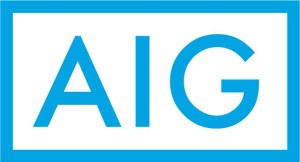 American International Group made a big move recently in hiring Brian Duperreault to lead the struggling insurance giant, but Standard & Poor’s was not impressed. The ratings agency revised its rating outlook to negative from stable, due to a continued rough time with its property/casualty commercial insurance division.
American International Group made a big move recently in hiring Brian Duperreault to lead the struggling insurance giant, but Standard & Poor’s was not impressed. The ratings agency revised its rating outlook to negative from stable, due to a continued rough time with its property/casualty commercial insurance division.
“The outlook revision reflects AIG’s protracted period of delivering P&C Commercial Insurance underwriting initiatives, which we believe may be a predictor of its executional effectiveness on a prospective basis,” S&P Global Ratings credit analyst Tracy Dolin explained in prepared remarks.
Standard & Poor’s noted that AIG’s operating performance has continued to do well from diversification, but it questions whether management can succeed in its plan to achieve an adjusted accident year loss ratio performance of 62 for its Commercial Insurance by the end of 2017. This number itself was raised from its original target of 60, S&P noted.
Duperreault, formerly head of Hamilton Insurance and himself an AIG veteran executive, took over as AIG CEO earlier in May. He replaced Peter Hancock, who was pressured by activist investor Carl Icahn and others to split AIG up into three separate units. He resisted this, focusing instead on streamlining and returning $25 billion to shareholders over two years.
Standard & Poor’s acknowledged Duperreault’s track record as an “accomplished P/C insurance industry veteran” but also argued that “his succession comes at a precarious time.”
Duperreault, S&P noted, is AIG’s “sixth CEO in nine years,” and his arrival comes as it has also dealt with a number of other senior management changes in the last few years.
While Duperreault’s arrival “addresses CEO succession uncertainty, in our view it may take a while to turn the Commercial operations around and meaningfully improve operating performance and AIG’s earnings quality,” S&P said.
Other reasons S&P cited for its outlook downgrade include:
- Two years now where AIG’s Commercial Insurance division produced “weaker-than-expected profitability, including unexpected reserve-strengthening measures from its U.S. liability lines.”
- A 2016 adjusted accident year loss ratio of 66.7 for Commercial Insurance, which reflects a deterioration close to the 68.7 number from 2012 S&P notes, however, that AIG’s adjusted accident year combined loss ratio improved a bit to 65.5 in Q1 2017, and that it has reached $1.4 billion of expends savings ahead of its target for year-end 2017.
- S&P forecasts a combined ratio for AIG of about 104 in 2017, which would include normal catastrophe losses and some adverse loss development for all of its P/C insurance business, “which would be weaker than many of its global multiline peers.”
Still, S&P said that AIG’s Consumer Insurance segment is somewhat offsetting troubles in commercial insurance.
Meanwhile, S&P has affirmed its ratings for AIG, which include an ‘A+’ insurer financial strength rating and ‘BBB+’ long- and short-term counterparty credit ratings, and also its ‘A+’ rating on AIG’s core subsidiaries.
This affirmation is based on AIG’s “very strong business risk profile and strong financial risk profile,” S&P said. Standard & Poor’s also said it saw AIG’s reinsurance treaty with Berkshire Hathaway subsidiary NICo as “a significant step in the right direction to reduce reserve volatility.”
A.M. Best released AIG from “under review” special scrutiny after Duperreault came on board, in part because of his hiring, but also consideration of “the viability of the planned corrective actions, capital return goals and organizational changes including the new management framework.”
Source: Standard & Poor’s





















 California Workers Comp Combined Ratio for 2024 Highest in 20-Plus Years
California Workers Comp Combined Ratio for 2024 Highest in 20-Plus Years  What to Expect in 2026: U.S. P/C Results More Like 2024
What to Expect in 2026: U.S. P/C Results More Like 2024  NOAA Announces Latest AI-Driven Global Weather Models
NOAA Announces Latest AI-Driven Global Weather Models 






